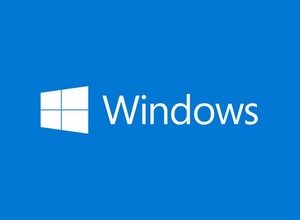 [German]German blog reader Henning contacted me via email because he has been experiencing Windows 10 and Windows 11 issues on several machines since the August 2022 updates. Four identical systems running Windows 10 or Windows 11 have been experiencing startup issues since installing the August 2022 updates. The machines are stuck at 30% of the installation after a reboot. I put the description in the blog – maybe there are more affected or someone knows a solution.
[German]German blog reader Henning contacted me via email because he has been experiencing Windows 10 and Windows 11 issues on several machines since the August 2022 updates. Four identical systems running Windows 10 or Windows 11 have been experiencing startup issues since installing the August 2022 updates. The machines are stuck at 30% of the installation after a reboot. I put the description in the blog – maybe there are more affected or someone knows a solution.
The blog reader runs four identical machines with Intel Core i3, eighth generation, which are affected by this problem. Three machines are running Windows 10 Pro, one machine has been accidentally upgraded to Windows 11 Pro. The reader describes the problem as follows:
- All four [systems]have been bucking since the August updates. The error shows up after rebooting after 30% of the installation.
- The Windows 10 machines boot, show the Windows logo with the circle, the display switch to a black background with a circle – and then nothing happens, the circle continues to be animated.
- The Windows 11 machine behaves basically the same, except it doesn't show an animated circle after the Windows logo. Black screen, no reaction.
There must still be a bit of life in the systems, though, since the HDD LED lights up from time to time – according to the reader. According to the user, the systems with Windows 10 Pro start a forced repair after a reset. This checks and repairs the installation – and after the restart, Windows recognizes that something went wrong and the update installation is rolled back. With the Windows 11 Pro system, it can only be recovered by loading a system restore point in the repair options of Windows PE.
Inplace Update does not help
The blog reader tried the obvious, an Inplace upgrade, where the same Windows is reinstalled over the running Windows installation. This usually helps with a corrupted Windows. However, the experience was not as great as the reader writes:
The Inplace upgrade went totally to shit on the Windows 10 machines. Same error pattern after 30%, but no option to get out of the number again, since no repair environment was started.
Strange that at every 2nd start, Windows was stuck with a BSOD 0XC000000F. Suggests after short research with you on a problem with the BCD. But why reproducible at every 2nd start?
In the above note, the reader refers to a blog post of mine. The behavior with each 2nd start is however already arg strange. The reader then reported the following:
I restored the Windows 10 machines with my previously created image. I didn't do any further diagnostics via PE for now, because it's more important that the PCs run next Monday.
On the Windows 11 system, I refrained from trying to solve the problem via in-place upgrade for now. However, I noticed by chance that during the regular installation of the pending updates in the phase to 30%, was intermittently briefly faded in that something did not work as expected and is trying to solve the problem (meaning). After that, the percentages continued to run until 30%. Restart -> Blackscreen.
The reader asks: What the hell might this be? The Windows 11 machine boots via UEFI/GPT, while the Windows 10 PCs still have Legacy/MBR. All the PCs have been given a new UEFI (is dated June 2022), which has done nothing. Right now, the reader is trying to avoid completely rebuilding the systems, as that will involve a miserable rat race. The question is whether someone from the readership can make sense of this or even knows a solution?
A possible solution
Addendum: German blog reader Christian mentioned in this German comment a solution obtined from a post from info001 in this Microsoft Answers forum thread. German blog reader JS has then described the steps he maded to fix the issue on his system:
- Make backup
- download psexec.exe from live.sysinternals.com
- run cmd.exe as admin
- run psexec -s -i regedit.exe
- go to HKEY_LOCAL_MACHINE\SECURITY\Policy\Secrets\NL$KM
- Delete the default value in CurVal (contains binary data)
- Delete the default value in OldVal (contains binary data)
- Restart computer
- Install Cumulative Update, e.g. 2023-01
Thanks to both readers for the hint. Maybe it helps.





